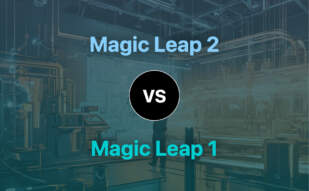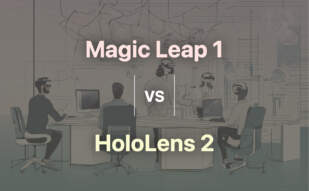Magic Leap 1 is a cutting-edge AR system by the American tech startup Magic Leap. It features the Lightwear headset and Lightpack wearable computer, offering holographic 3D objects to enhance reality. With cameras for environment and eye-tracking, Magic Leap aims to revolutionize everyday computing with its ultimate vision of mixed reality glasses. Despite some limitations, like field of view, it has raised significant investments and continues to improve its technology.

Exploring options beyond Magic Leap 1, consider WebGL, WebGL 2, WebVR, WebXR, OpenXR, React Three Fiber, p5.js, Pixi.js, Babylon.js, A-Frame, X3DOM, Deck.gl, and VTK.js for your immersive tech needs.
Magic Leap 2

Delving into the future of AR hardware, there stands a promising entrance, the Magic Leap 2. This device is radiant with a light of innovation in enterprise solutions, offering prescription accommodation and customizable UX among other cutting-edge features.
Magic Leap 2 Top Features
- Lightweight Structure: Weighing just 260g, akin to regular headphones.
- Comfort Fit: Utilizes custom fit app for the perfect fit, tailored from research based on over 1500 face scans.
- Eye Accommodation: Accommodates prescription lenses and employs eye-tracking cameras for a strain-free user experience.
- High Definition Display: High resolution of 1440×1760 px ensures vividness and clarity in both images and text.
- Immersive Audio: Industry-leading spatial audio for real-time collaboration and a true immersive experience.
| Feature | Description |
|---|---|
| Dynamic Dimming | Operates in diverse lighting conditions, offers global and segmented dimming. |
| Powerful Processor | Houses a powerful AMD quad-core Zen 2 SoC chip, perfect for demanding visuals and applications. |
| Partitioned Computing | Adopts a unique partitioned computing approach between two processors for enhanced efficiency. |
Magic Leap 2 Limitations
- High Price Tag: At $3,692.99 it may be out of reach for some consumers.
- Exclusive Partnership: Sold exclusively in AT&T-owned stores, limiting purchasing options.
- Company Instability: The company laid off half its staff recently due to the COVID-19 pandemic.
Magic Leap 2 Pricing
The Magic Leap 2 packs a punch in terms of its impressive features, but it also comes with a hefty price tag, starting from an eye-opening $3,692.99.
Magic Leap 2 Use Cases
Use case 1 (Healthcare)
The high resolution, extensive FOV, and adaptive hardware features make Magic Leap 2 a great tool for full-body diagnostics in the healthcare industry.
Use case 2 (Education)
Magic Leap 2 can introduce mesmerizing levels of immersion in virtual classrooms, harnessing spatial audio, eye-tracking and high-quality visuals to facilitate comprehensive learning experiences.
Use case 3 (Gaming)
The combination of real-world integration, powerful processor, and high-resolution display positions Magic Leap 2 as an AR hardware champion in the gaming industry.
Magic Leap
Magic Leap, a Florida-based AR tech behemoth founded by Rony Abovitz, is known for its extraordinary head-mounted AR display, the Magic Leap One. Pioneering the light-field chip technology with silicon photonics, the company has been backed by leading investors like Google and Alibaba, amplifying its valuation to $4.5 billion in 2016.
Magic Leap Top Features
- Revolutionary AR Display: Magic Leap One, an innovative head-mounted AR display, immerses users into a realistically augmented world.
- Light-Field Chip: Leveraging the power of silicon photonics, Magic Leap is creating the industry-first light-field chip for advanced AR experience.
- AI Assistant, Mica: This intelligent assistant introduced in 2018 amplifies Magic Leap’s usability and interaction.
| Key Features | Details |
|---|---|
| Partnerships | Partnerships with AT&T facilitated Magic Leap One’s US availability and with Lucasfilm and ILMxLAB for R&D. |
| Acquisitions | Acquired NorthBit, Dacuda’s 3D division, and military startup Chosen Reality to strengthen its AR technology. |
Magic Leap Limitations
- Limited to business uses: Magic Leap recently shifted focus to business use cases, perhaps limiting the range of consumer applications.
- Company restructuring: Due to COVID-19 and economic impacts, Magic Leap underwent a major restructuring that reduced staff by half and lead to valuation drop.
Magic Leap Use Cases
Use Case 1
Professional training and development: Magic Leap’s AR technology can provide immersive, realistic training simulations, boosting skill acquisition and job performance.
Use Case 2
Retail and product visualization: Magic Leap’s AR interfaces can illustrate products in 3D, enabling customers to experience products virtually before purchase.
Use Case 3
Remote collaboration: With Magic Leap, remote teams can collaborate in 3D virtual space, improving project coordination and execution.
HoloLens 2
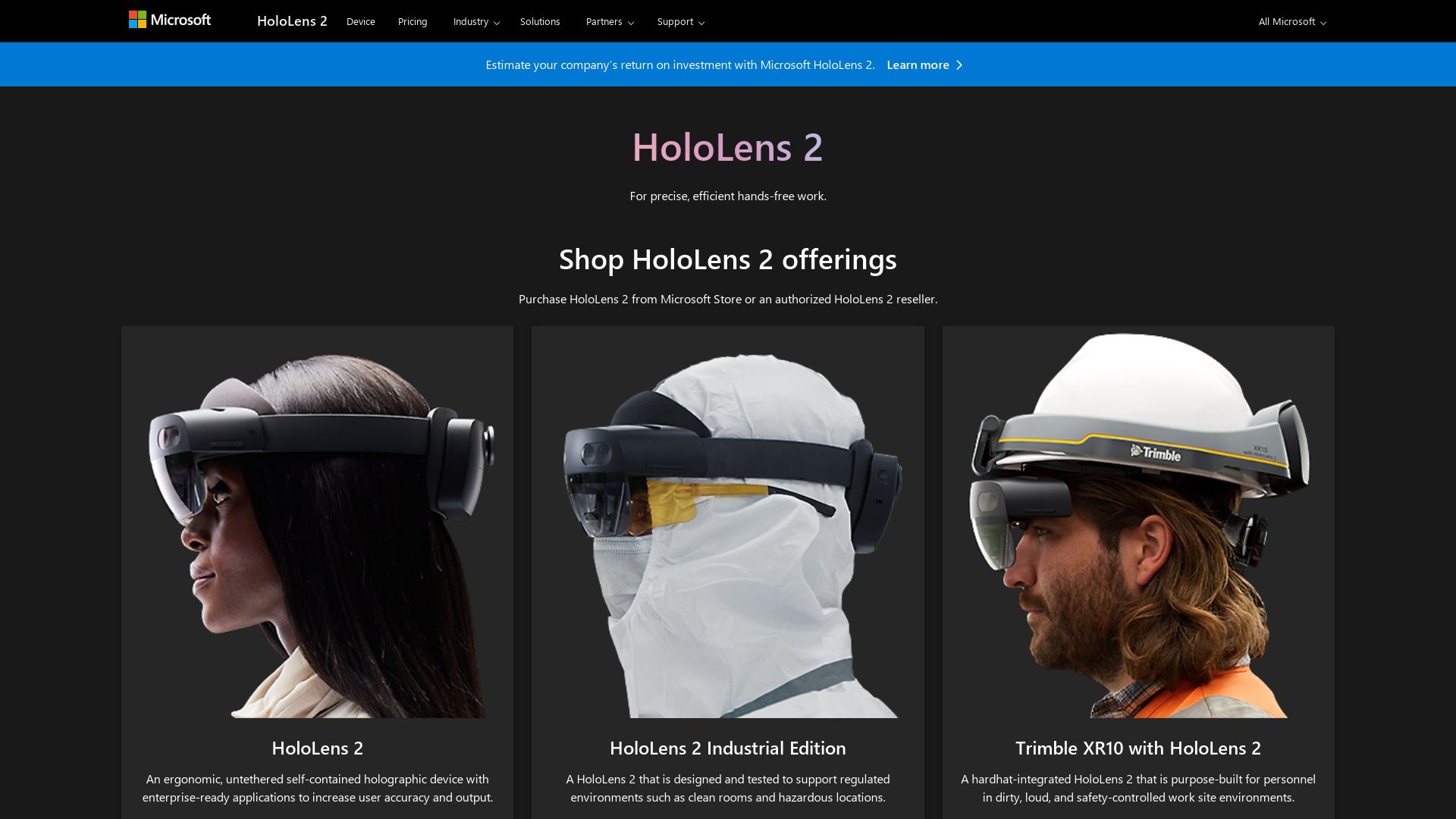
From the tech giant Microsoft comes the trail-blazing HoloLens 2, a premium headset not targeted towards gamified experiences, but instead optimized for productivity, education, and enterprise use.
HoloLens 2 Top Features
- Transparent lenses built into a visor design.
- A robust 1-MP Time-of-Flight depth sensor coupled with infrared cameras for exceptional hand-tracking, eye-tracking and object anchoring functionalities.
- An impressive 8MP resolution camera facilitating efficient human-computer interfacing and robust biometric security.
- Featuring the Qualcomm Snapdragon 850 processor with 64GB storage, paired with an upgrade to 4GB DDR4 RAM, making it highly effective for enterprise use.
- Enhancements to spatial audio with a 5-mic array, facilitating smoother communication and access to voice commands.
- The sizable display presents 1440×936 pixels per eye, powered by 2k 3:2 light engines, providing crisp and immersive visuals.
| Weight | 566 grams |
| Battery Life | Approximately 3 hours (2 hours under intense use) |
| Field of View | 43 degrees horizontal |
HoloLens 2 Limitations
- Primarily targeting the enterprise market, it may offer fewer entertainment options for casual tech enthusiasts.
- Given its enhanced capacities, it is heavier when compared to similar devices, like the Oculus Quest 2.
- Despite its elite design, it may occasionally prove demanding regarding its battery lifespan, especially under heavy use.
HoloLens 2 Pricing
Coming at a price tag of $3,500, the HoloLens 2 is firmly parked at the high-end of premium headsets.
HoloLens 2 Use Cases
Enterprise Use
With a design focus on productivity and education, it serves as an effective tool for businesses and institutions seeking enhanced workflows and immersive learning experiences.
Security
An 8MP resolution camera provides robust human-computer interfacing and biometric security, increasing its utility in sensitive and secure environments.
Army Applications
With key spatial awareness, the readers will remember the HoloLens 2 was chosen for the US Army’s Integrated Visual Augmentation System (IVAS), underscoring its suitability for use in mission-critical scenarios.
HoloLens 2 Industrial Edition
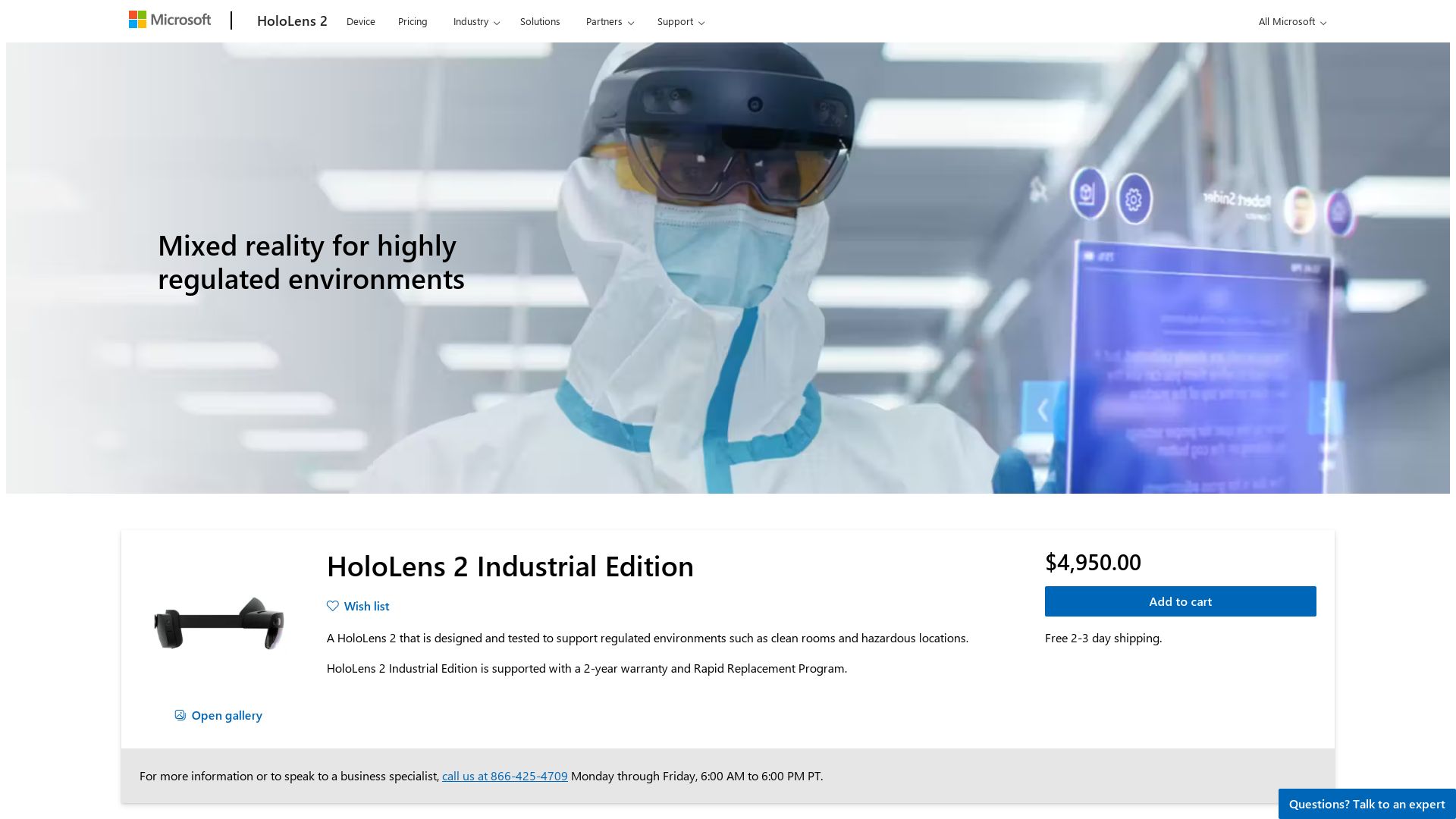
Engineered to meet the rigorous demands of industrial environments, the HoloLens 2 Industrial Edition offers an elevated range of AR solutions. Touted as an untethered, self-contained computer with see-through holographic lens, this device optimizes remote interactive experiences.
Top Features of HoloLens 2 Industrial Edition
- 64GB storage and Wi-Fi 5, Bluetooth connectivity for seamless data management.
- Vision clarity with a 2k-resolution holographic lens that enhances 3D image interpreting and text readability.
- Touch, grasp, and move holograms via a natural-based response system.
- Industrial compatibility with ISO 14644-1 Class 5-8 clean room standards and UL Class I Division 2 compliance.
- Designed for long-term comfort with an adjustable fit system. Compatible with standard glasses, and the visor can be flipped up for task transitions.
| Audio System | Camera System |
|---|---|
| 5 channel speakers, microphone array enabling voice commands through natural language speech processing. | 8MP stills, 1080p30 video camera, 4 visible light cameras, 2 IR cameras for tracking head and eye movements, and a 1-MP Time-of-Flight (ToF) depth sensor. |
| Power and Performance | Support and Warranty |
| Powered by Qualcomm Snapdragon 850 Compute platform that ensures robust performance; USB-PD facilitates fast charging for its battery life of 2-3 hours active use. | Comes with a 2-year warranty, inclusive of a rapid replacement program that offers expedited shipping for immediate device replacements. |
HoloLens 2 Industrial Edition Limitations
- Carrying case not subject to warranty.
- No support for replacements of HoloLens 2 Industrial Edition or its refurbishment.
- Cannot be upgraded to Industrial Edition from HoloLens 2.
HoloLens 2 Industrial Edition Pricing
Available for $4,950, an all-inclusive price that encapsulates all applicable taxes and delivery costs within Switzerland.
HoloLens 2 Industrial Edition Use Cases
Use Case 1: Industrial Cleanrooms
In controlled, regulated environments that require compliance with ISO 14644-1 Class 5 and UL Class I, Division 2, the HoloLens 2 Industrial Edition shines. Its specifications make it a reliable choice for enhanced AR experiences that foster safe, efficient operations and positive compliance records.
Use Case 2: Remote AR Interactions
With a focus on real-time virtual content engagement, HoloLens 2 Industrial Edition emerges as an all-in-one solution that propels remote interactions. This makes it an essential tool for industries that heavily rely on remote consulting, guiding, or instructing.
Use Case 3: Extensive Work Periods
The design caters to extended use cases. The ergonomics of the adjustable fit system facilitate prolonged use, and being able to operate over standard glasses and the flip-up visor adds a layer of adaptability suited for task transitions.
HoloLens 1

The HoloLens 1, a landmark innovation by Microsoft, stands as the world’s first fully untethered holographic computer, revolutionizing the way we interact with technology.
Top Features of HoloLens 1
- An adjustable visor bristling with sensors and displays for an untethered, immersive experience.
- 64GB of storage and 2GB of RAM to manage holographic computations.
- Intel 32-bit architecture with a custom Microsoft Holographic Processing Unit (HPU 1.0).
- Safety compliant to ANSI Z87.1, CSA Z94.3, and EN 166 standards.
| Feature | Description |
|---|---|
| User Interaction | Interaction is achieved through gaze tracking, gesture input, and voice recognition. |
| Battery Life | Active use of 2-3 hours and 2 weeks on standby; the device can also be used while charging. |
| Software | Preinstalled with Windows 10, Windows Store, and various applications for immediate immersion. |
HoloLens 1 Disadvantages
- Narrow field of view, specifically in the vertical direction.
- Interoperability issues with mixed reality testing.
- High price point starting at $3,000.
HoloLens 1 Pricing
Retailing at a significant $3000, the HoloLens 1 is a significant investment targeting primarily the enterprise market.
HoloLens 1 Use Cases
Enterprise Market
From remote assistance to prototyping and on-site diagnostics, HoloLens 1 is a compulsive contributor to operational efficiency in the enterprise realm.
Gaming Industry
The first-person shooter game, RoboRaid, exemplifies the gaming capabilities of HoloLens 1, offering an immersive gaming experience.
Virtual Tutorials
The ability to doodle on-call via Skype on HoloLens sets the stage for potential guided tutorials in diverse industries.
Quest Pro
Enter the world of cutting-edge VR/AR technology with Quest Pro, a high-end headset designed predominantly for enterprise users, keen on integrating virtual and real-world experiences into their workflows.
Quest Pro Top Features
- Sleek, black, professional design with a glossy front panel and an incredibly comfortable wraparound band.
- Equipped with 5 cameras (3 front-facing, 2 side-facing) for an immersive experience.
- Twin charging sets along with an easy-access power button and a volume rocker.
- Redesigned motion controllers which are lighter and include rechargeable batteries.
- Powered by the Snapdragon XR2+ processor, an upgrade that’s 50% stronger than the Quest 2.
- Impressive resolution of 1,920 x 1,800 pixels per eye with a local dimming backlight system.
- Customized interfaces in Meta Horizon Worlds for collaborative work.
| Feature | Description |
|---|---|
| Storage | 256GB onboard storage, ensuring ample space for a variety of apps and experiences. |
| Accessories | Includes a USB-C port, cable, and a wall adapter as well as a rubber cap protective cover. |
| Snapshot XR2 Gen 2 graphic performance | High-end graphic performance suitable for users aged 10+. |
Quest Pro Limitations
- The headset may exert pressure against the face as it is unpadded.
- Peripheral vision remains exposed, an optional full light blocker accessory is suggested for improved comfort.
- The cost is relatively high, making it better suited for professionals with specific VR/AR needs.
- Limited consumer-focused software leveraging Quest Pro upgrades.
Quest Pro Pricing
Given its professional focus, the Quest Pro comes at a price of $1499.99, which is thrice the cost of Meta Quest 2, justifying the array of top-notch features it offers.
Quest Pro Use Cases
Use Case 1: Collaborative Work
With custom interfaces in Meta Horizon Worlds, the Quest Pro is a game-changer for team collaboration in a virtual environment.
Use Case 2: Advanced VR Learning
Quest Pro, with its large color gamut and high resolution, is ideal for educational institutions pushing the boundaries of traditional learning methods.
Use Case 3: Professional Training
The headset can be utilized by industries for realistic training scenarios, providing professionals with real-life situations in a controlled environment.
Quest 2
Delving into the world of AR/VR tech, we find the Meta Quest 2, a well-rounded VR headset developed by Reality Labs, a division of Meta Platforms. Announced in 2020, it stands out for its updated specs, increased refresh rate, and higher per-eye resolution.
Quest 2 Top Features
- Powered by Qualcomm SnapDragon XR2 processor and 6 GB LPDDR4X Memory
- Offering RGB LCD display with 1832 x 1920 resolution per eye with refresh rates 72-120 Hz
- Features 6DOF inside-out tracking through four built-in cameras and two controllers.
| Internal Storage | 64 GB (discontinued), 128 GB, 256 GB |
| Connectivity | USB-C, Bluetooth 5, Wi-Fi 6 |
| Online Services | Quest Store |
Quest 2 Limitations
- Battery life, albeit improved, lasts only between 2-3 hours between charges.
- The original 64GB storage offering was discontinued and replaced by a standard 128GB with no room for expansion.
Quest 2 Pricing
The Meta Quest 2 comes in two variants: $299 for the 64 GB model, and $399 for the 256 GB model.
Quest 2 Use Cases
Use Case 1: Gaming
The Quest 2, with its high refresh rates and immersive VR experiences from the Quest Store, is a perfect fit for gaming enthusiasts interested in diving into the world of VR.
Use Case 2: Education
With VR gaining sway in the field of education, Quest 2 can be used as a learning aid, bringing lessons to life through VR experiences.
Use Case 3: Training
In industries like healthcare, aviation, or engineering, Quest 2 can provide realistic VR simulations for effective practice-based learning and training.
Oculus
Conceived by Palmer Luckey, Oculus, an Oculus VR brainchild, is a crucial gear in the grand design of the VR industry. The Oculus Rift, among its unique offerings, marked the initiation of actuality-infused experiences at competitive prices circa 2013.
Oculus Top Features
- Novel tech incorporation: Spatial pre-distortion, vast stereoscopic field-of-view, compelling the VR landscape’s standards upward.
- Compatibility: Rift’s software library remains compatible with successors such as Oculus Quest.
- Orientational precision: Utilizes a trio of gyros, accelerometers and magnetometers for impeccable head-orientation tracking sans drift.
| Feature | Description |
|---|---|
| Enhanced field of view | The Rift boasts more than 90 degrees horizontal FOV, exponentially surpassing previous VR devices. |
| Reduced screen door effect | Facilitates less discernible individual pixels, upgrading the VR experience’s quality. |
| Improved clarity | Includes a 1080p LCD panel that significantly amplifies clarity and weakens the screen door effect. |
Oculus Limitations
- Diminished Rift line: Oculus Rift line ended after the discontinuation of the Rift S in April 2021.
- Potential comfort issues: Taking hints from earlier failures like Nintendo Virtual Boy console.
Oculus Pricing
As part of the mainstream VR industry, Oculus Rift surfaced as a competitively priced option making VR experiences accessible to a wider audience.
Oculus Use Cases
Use Case 1: Enhanced Gaming
The Oculus Rift, equipped with a stereoscopic 3D view and impeccable head-orientation tracking, immerses gamers into their virtual exploits with unmatched realism.
Use Case 2: Virtual Reality Exploration
Oculus brings VR mainstream, catalyzing exploration beyond gaming into areas such as virtual tourism, simulative training & education, and immersive virtual social interactions.
Use Case 3: VR Developments
A beacon for VR developments, Oculus inspires hundreds of companies to forge ahead with VR products, igniting a new VR revolution since 2016.
Apple Vision Pro
The Apple Vision Pro defines a paradigm shift in augmented reality hardware, where the digital seamlessly intertwines with the physical space. Equipped with high-performance technology and intuitive navigation, this device fosters connectivity, collaboration and entertainment. Thanks to an array of advanced features, it has the ability to metamorphose your environment into an immersive experiential platform.
Apple Vision Pro Top Features
- Infinite Canvas: Allows adjustment of app size and arrangement for a customized experience.
- Spatial Audio: Transforms any room into a personal theatre with more pixels per eye than a 4K TV.
- Connectivity and Collaboration: Facilitates simultaneous document work and life-size FaceTime video tiles.
- 3D Camera: Equipped to capture spatial photos and videos for an enriched digital experience.
- VisionOS: Apple’s first spatial OS, offering powerful, streamlined spatial experiences.
- Environment feature: Allows for surroundings transformation, landscape selection and sky replacement.
- Precise Eye Tracking: Eliminates the need for controllers, enhancing user convenience.
| Feature | Description |
| Digital Crown control | Customizable immersion level |
| Optic ID | Secure authentication system based on unique iris patterns |
| External, wearable Battery | Delivers 2-hour battery life, with continuous use upon plug-in. |
Apple Vision Pro Limitations
- Price: Starting at $3,499, it may not be affordable for all users.
- External, wearable Battery: Limited to 2-hour battery life without plug-in power supply.
- Availability: Scheduled to be available for sale only in early 2024.
Apple Vision Pro Pricing
The Apple Vision Pro is slated for commercial availability in early 2024. The pricing starts from $3,499.
Apple Vision Pro Use Cases
Use Case 1: Futuristic Communication
When it’s time for a business meeting or a casual chat, Apple Vision Pro’s life-size FaceTime video tiles and simultaneous document work features can redefine the way you communicate. It makes remote interaction almost as good as in-person connection.
Use Case 2: Immersive Entertainment
For those seeking an unprecedented movie-watching or gaming experience, Apple Vision Pro’s Spatial Audio and high-pixel display can turn any room into a personal cinema or gaming platform.
Use Case 3: Enhanced Productivity
With its VisionOS and the capability to run iPhone and iPad apps, the Apple Vision Pro can act as an efficient productivity tool, akin to a computer or iPad.
Vision Pro
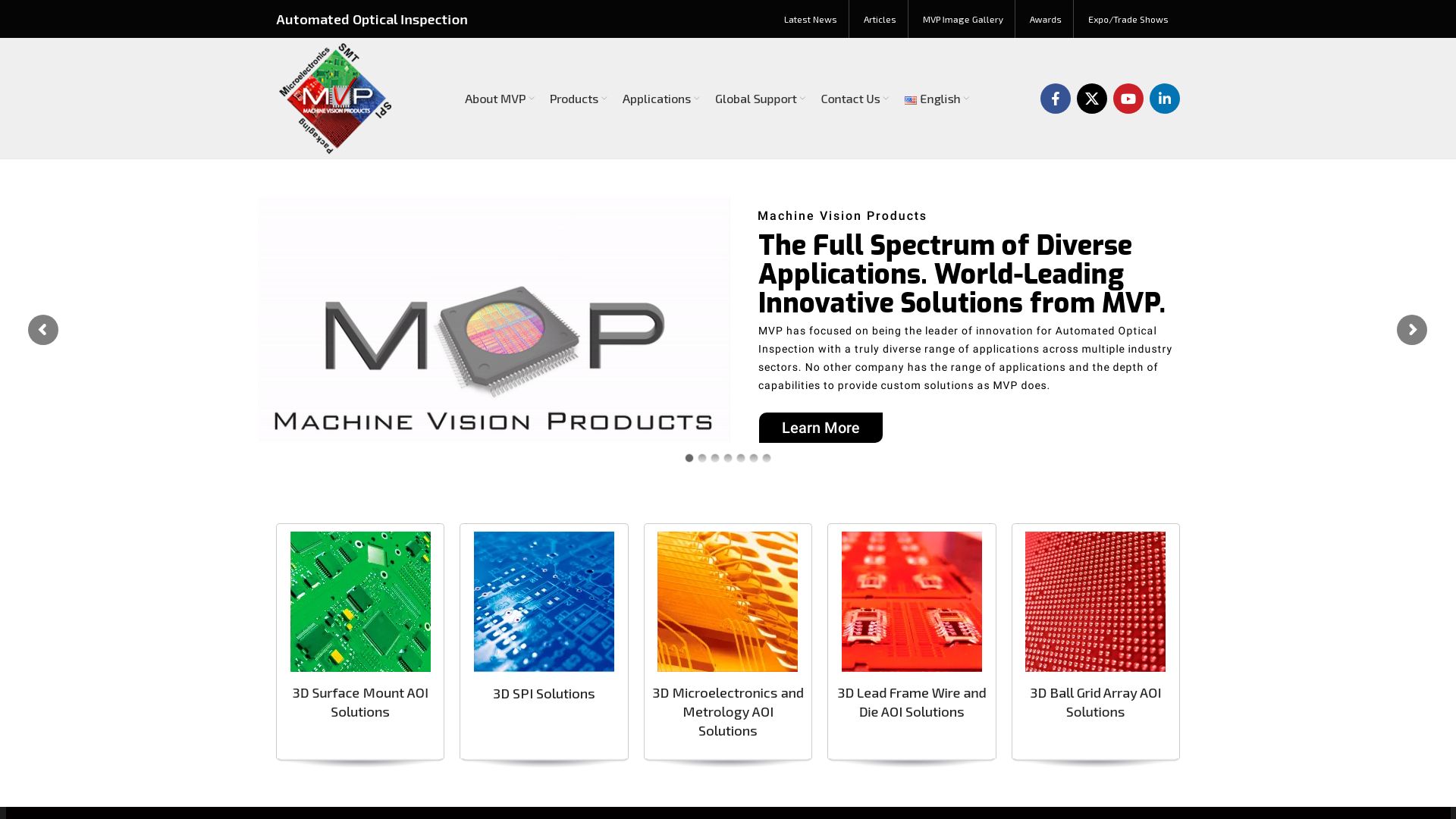
The Vision Pro heralds a new class of digital interface, bleeding the boundary between the physical and digital realms. With the agility of voice, eye, hand control, and a wealth of powerful features, this personal electronic device envisions a revolutionary way to interface with technology.
Vision Pro Top Features
- 12 cameras and 6 microphones for 3D photos and videos
- Runs on Apple’s inaugural spatial OS, the VisionOS
- Immersive Spatial Audio and 23 million pixel micro-OLED display promise beyond 4K resolution
- Includes Precise Eye Tracking
- Entirely controller-free; navigation via hand, voice, or eye commands
- Functions analogous to desktops and iPad
| Atomized workspace | Transforms any space into a theater or workspace |
| Virtual Avatars | Mimics real interactions, ideal for remote engagements |
| Lock Screen Customization | Promotes user preference and ease of use |
Vision Pro Downsides
- Expensive for typical consumers
- Relies on an external battery pack, compromising comfort and ease-of-use
- Dangling cable restricts mobility
Vision Pro Pricing
Retailing at a hefty $3,499, the Vision Pro aligns with niche, high-end gadget enthusiasts. Yet, a cheaper variant featuring fewer cameras, sensors, and a simpler chip architecture is available, ranging from $1,500 to $2,500.
Vision Pro Use Cases
1. Remote Collaboration
The Vision Pro’s virtual avatar feature, coupled with its advanced camera system and immersive spatial audio, fuels robust remote collaboration and connectivity.
2. Personal Entertainment
The ability to transform any space into a personal theater, coupled with beyond 4K resolution, creates an unmatched personal entertainment experience.
3. Next-gen Photography
With 12 cameras, 6 microphones, and the power of 3D imaging, the Vision Pro reshapes the digital landscape for creative photography and videography.
Grant Sullivan
Content writer @ Aircada and self proclaimed board game strategist by day, AI developer by night.



